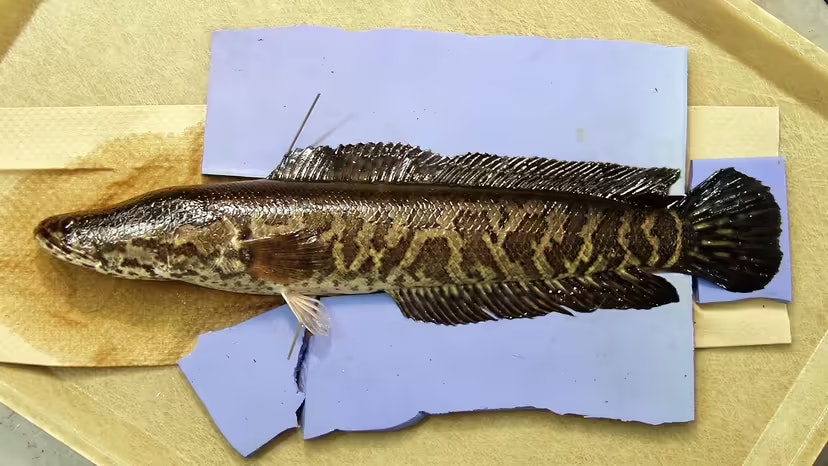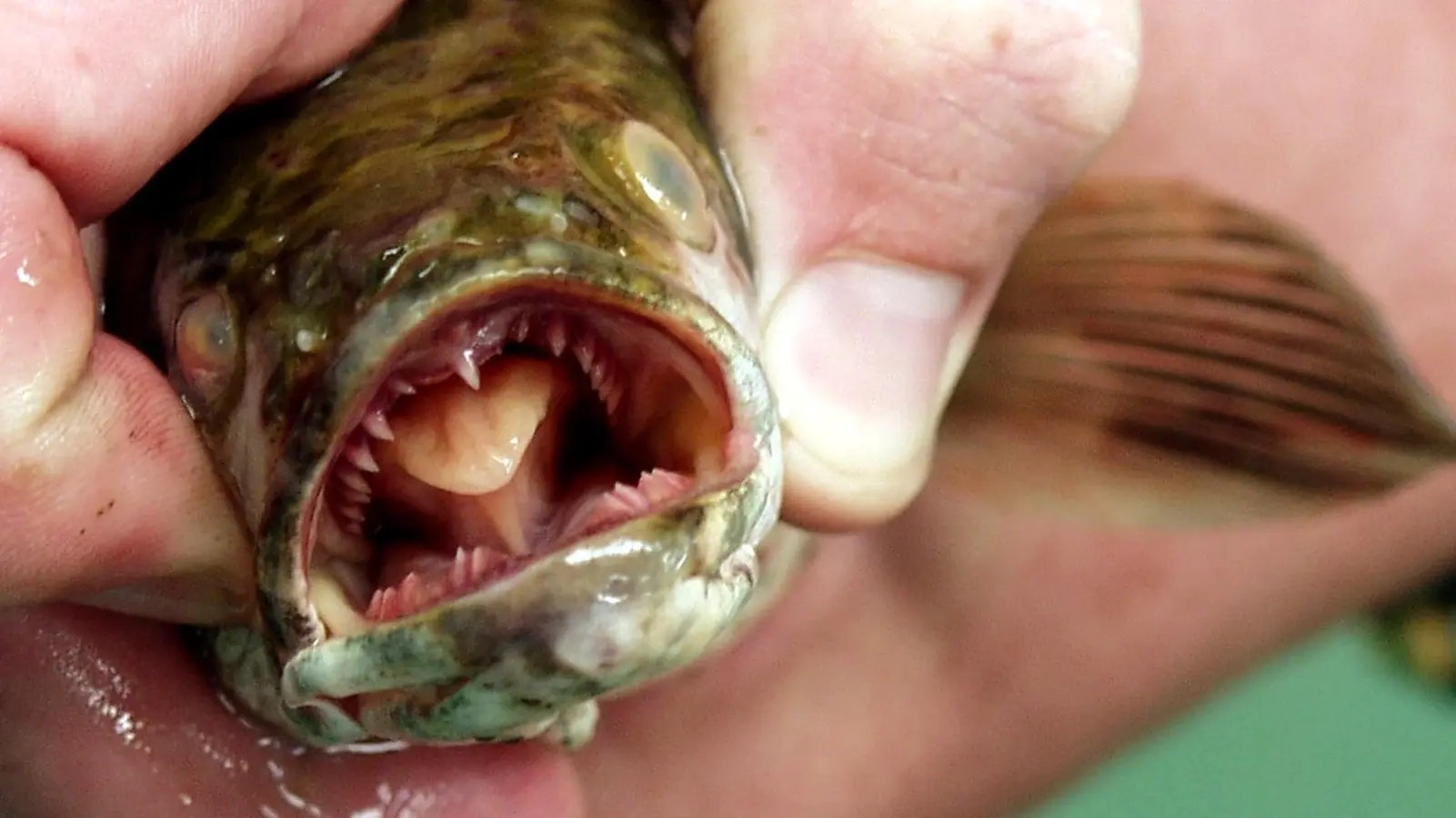“Frankenfish” are voracious predators that reproduce like mad, can survive for days on land, disrupt entire aquatic ecosystems — and they could end up in Wyoming.
Frankenfish is a colloquial term for northern snakeheads. They’re tenacious invaders that can move across land in search of new ponds or lakes to populate.
Northern snakeheads are native to parts of Asia and Russia, and they’ve already caused chaos in several U.S. states.
And one stupid mistake is all it would take for them to end up in Wyoming and across the region, a fish biologist said.
If Just One Gets Dumped Here …
“At this time, they’re not here,” but that’s no reason to assume they never will be, Robert Al-Chokhachy told Cowboy State Daily. “One of the biggest sources of invasive species around the world is people trying to get rid of fish they have in aquariums. They think that dumping them is kinder than just killing them.”
Al-Chokhachy is a research fish biologist for the U.S. Geological Survey’s Northern Rocky Mountain Science Center in Bozeman, Montana.
The thought of somebody dumping northern snakeheads into a Wyoming waterway also keeps Wyoming Game and Fish Department biologists up at night.
“We primarily message our concerns about this species to aquarium hobbyists through our ‘Don't let it loose’ campaign,” agency spokeswoman Breanna Ball told Cowboy State Daily.
“We believe they could survive in some of our waters in Wyoming; however, we prefer not to find out by doing all we can to prevent them from ever being introduced,” she added.

‘Those Things Are Frickin’ Nasty’
With an eel-like body and gnarly mouth, the northern snakehead isn’t going to win any beauty contests.
But even beyond its hideous appearance, the northern snakehead is an incredibly destructive species, avid angler and fishing guide Paul Ulrich of Pinedale told Cowboy State Daily. From both a personal and a business standpoint, he absolutely doesn’t want them here.
“Those things are frickin’ nasty,” he said. “They will devastate a native fishery in very short order. They are extremely predatory and just very, very nasty.”
Fisheries agents have been scrambling to cull infestations of northern snakeheads in the East and Southeast, as well as southern California. Most recently, they turned up in Missouri, Outdoor News reported Wednesday.
Nearly Impossible To Get Rid Of
Once they’ve infested an area, it’s all but impossible to get rid of them, Al-Chokhachy said.
“The females lay a lot of eggs, so they can grow in population size really rapidly,” he said. “And they can travel on land, which gives them added ability to colonize new places.”
As hatchlings and in their younger stages, “They are really competitive with other smaller-bodied fish,” he added. “And once they’re large enough, they’re incredible predators.”
Cold Won’t Save Us From Frankenfish
One might think that a fish native mostly to southern Asia wouldn’t survive in the Northern Rockies, but Al-Chokhachy said that’s not the case.
“They’re not necessarily limited to warm areas. They have a pretty broad temperature tolerance,” he said. “People might think, ‘Oh, there’s no way those fish could make it in the Greater Yellowstone.’ But when you have a generalist species like that northern snakehead, that can adapt to a wide range of temperatures and conditions, I think they could make it here.”
Al-Chokhachy said he doesn’t envision northern snakeheads making it to Wyoming or the rest of the Greater Yellowstone Ecosystem on their own. Instead, if that dreaded day ever comes, it will be through human error. Or perhaps even intentionally.
“Intentional introductions of invasive species do happen,” he said.
And if either by mistake or deliberate ill intent, once they are in one part of the system, they could quickly spread to other areas around Wyoming, Montana and neighboring states, Al-Chokhachy said.
“One wonderful thing about the Greater Yellowstone Ecosystem is that the rivers are all connected,” he said. “But that also means if an invasive species gets in at any point in the system, it could infest the entire system.”
Mark Heinz can be reached at mark@cowboystatedaily.com.





